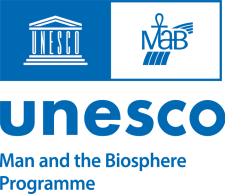The biosphere reserve


What is a biosphere region?
A Biosphere Region (aka a Biosphere Reserve) is a UNESCO international designation (MAB program) that recognizes the potential and efforts of stakeholders in a territory likely to become a site of excellence in terms of sustainable development. “Working Together” is a top priority. The network currently has 727 sites in 131 countries.
« Since receiving international designation, the Manicouagan-Uapishka Biosphere Reserve has demonstrated innovation and empowerment to mobilize partnerships: It has become an inspiring model for the entire world network. »
Meriem Bouamrane | Program Specialist (MAB, Paris)
A Short Story of Great Vision
In 2002, several Manicouagan stakeholders met in Baie-Comeau with the goal of obtaining the UNESCO Biosphere Region status. The project promised to be as uncertain as it was interesting. On the one hand, the consultation process meant was a major challenge given the diversity of users on the territory. On the other hand, very few sites in the world had managed to get large industries involved in such a challenging process, which was unavoidable in Manicouagan.
A territory of 54,800 km2 to discover
Within the Nitassinan of Pessamit, the Innu territory, the entire Manicouagan area is part of the biosphere region. This includes the City of Baie-Comeau and all the villages along the St. Lawrence River, from Pessamit to Baie-Trinité. “Uapishka” refers to the Groulx Mountains and means “white summits” in innu-aimun.

